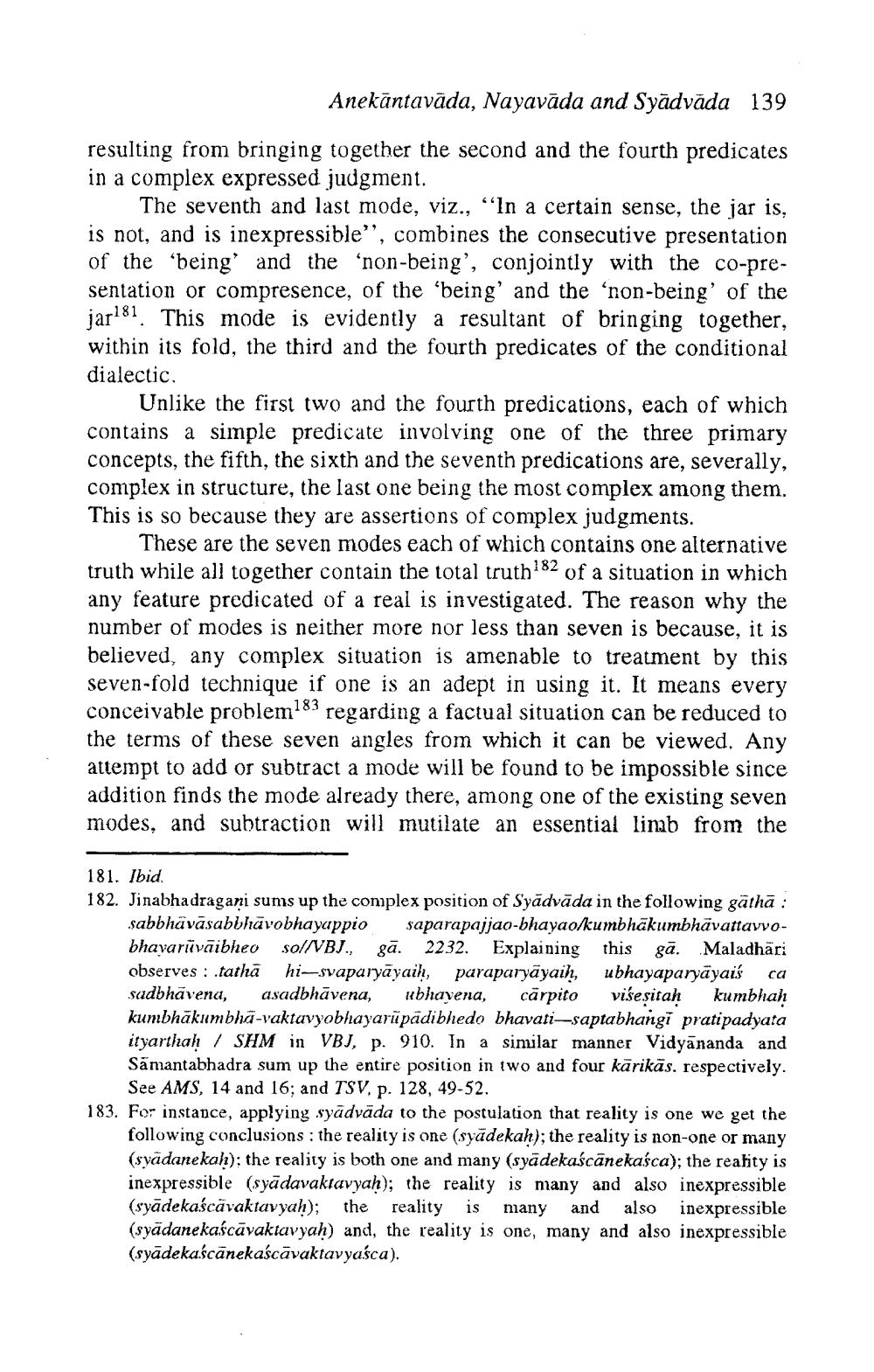________________
Anekāntavāda, Nayavāda and Syādvāda 139
resulting from bringing together the second and the fourth predicates in a complex expressed judgment.
The seventh and last mode, viz., “In a certain sense, the jar is, is not, and is inexpressible", combines the consecutive presentation of the being' and the ‘non-being', conjointly with the co-presentation or compresence, of the 'being' and the ‘non-being of the jar181 This mode is evidently a resultant of bringing together, within its fold, the third and the fourth predicates of the conditional dialectic,
Unlike the first two and the fourth predications, each of which contains a simple predicate involving one of the three primary concepts, the fifth, the sixth and the seventh predications are, severally, complex in structure, the last one being the most complex among them. This is so because they are assertions of complex judgments.
These are the seven modes each of which contains one alternative truth while all together contain the total truth 82 of a situation in which any feature predicated of a real is investigated. The reason why the number of modes is neither more nor less than seven is because, it is believed, any complex situation is amenable to treatment by this seven-fold technique if one is an adept in using it. It means every conceivable problem183 regarding a factual situation can be reduced to the terms of these seven angles from which it can be viewed. Any attempt to add or subtract a mode will be found to be impossible since addition finds the mode already there, among one of the existing seven modes, and subtraction will mutilate an essential limb from the
181. Ibid. 182. Jinabhadragani sums up the complex position of Syädvāda in the following gathā :
sabbhāvāsabbhāvobhayappio saparapajjao-bhayao/kumbhakumbhāvattavvobhavarivāibheo sol/VBJ., gā. 2232. Explaining this gā. Maladhari observes : tathā hi--svaparyāyaih, paraparyāyaih, ubhayaparyayais ca sadbhāvena, asadbhāvena, ubhavena, carpito više.sitah kumbhah kumbhākumbha-vaktavyobhayarüpadibhedo bhavati--saptabhangi pratipadyata ityarthah / SHM in VBJ, p. 910. In a similar manner Vidyananda and Samantabhadra sum up the entire position in two and four kärikās, respectively.
See AMS, 14 and 16; and TSV, p. 128, 49-52. 183. For instance, applying syādväda to the postulation that reality is one we get the
following conclusions: the reality is one (syādekah); the reality is non-one or many (syadanekah): the reality is both one and many (syädekaścānekaśca); the reality is inexpressible (syādavaktavyah); the reality is many and also inexpressible (syādekaścāvaktavyah); the reality is many and also inexpressible (syādanekaścāvaktavyah) and, the reality is one, many and also inexpressible (syādekaścānekaścāvaktavyaśca).




